What Is Geoduck and How Do You Use It?
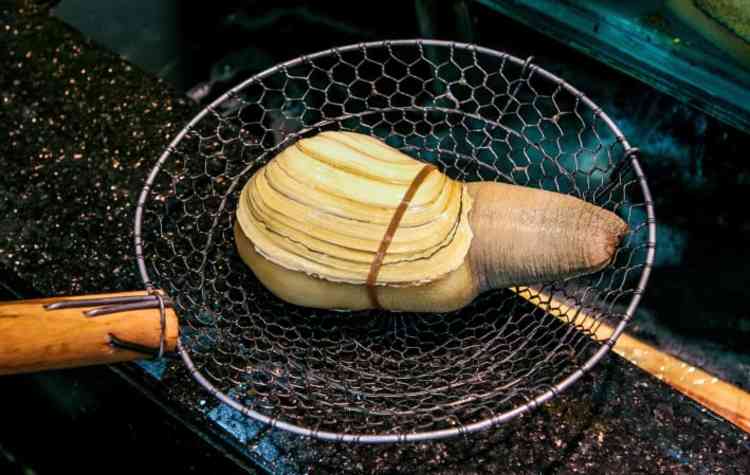
Geoduck is just one of the many fascinating creatures in the sea, and although you may have heard the name of this weird and wonderful creature in passing, there is a very good chance that you don't know too much about it.
In this article, we will explore what a geoduck is and how to use it in the best ways possible when cooking with it. Added to the best recipes using geoduck, we'll also discuss where to buy it and some average price points. Let's dive in and find out more.
Jump to Section
What Is a Geoduck Clam?
Geoduck is a rare delicacy in many countries. Found in the sea, it is the world’s largest burrowing clam, known for burrowing far below the seafloor. It weighs two to three pounds and is too big to retreat into its shell. The name comes from a Native American tribe called the Nisqually, who coined the term "gweduc," which means "big deep." The anatomy is rather simple and includes two major parts — the siphon, which is the neck that hangs outside the shell, and the mantle, the meaty part inside the shell.
They come from the Pacific Northwest and Western Canadian coast, and they anchor themselves to one spot and stay there for life, which can often last over 100 years. Seeing two siphon holes means that there is likely a geoduck. Due to the difficulty in finding them in the wild, geoducks eaten by humans come mostly from specialized farms. With a pearly and pale neck, the geoduck is also recognizable for its creamy white body.
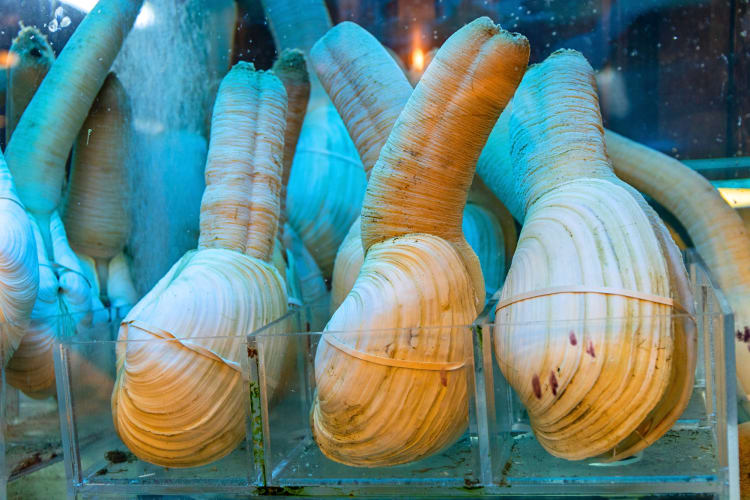
What Does Geoduck Taste Like?
Geoduck is not as chewy as some clams. Like abalone, it is quite tender, however, it's noticeably more crispy, even when eaten raw, due to its dense trunk. It terms of flavor, geoduck has a sweet taste, which is a rarity for raw shellfish.
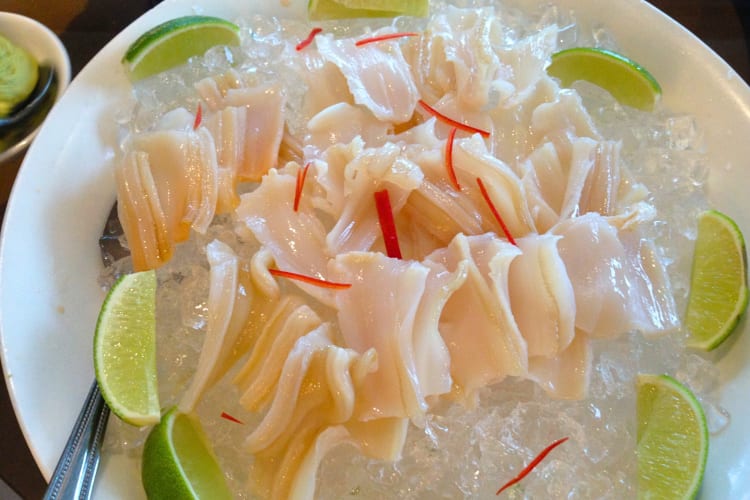
Geoduck Pronunciation
A major question when talking about this creature is how to pronounce its name. It is pronounced "gooey-duck." Whilst the "geo" is pronounced very differently from how it's spelled for English speakers, the "duck" element is pronounced as you'd expect.
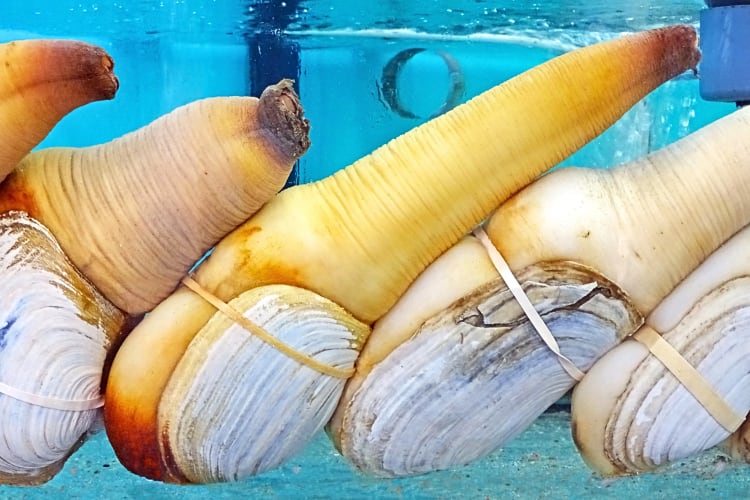
Do Geoducks Have Pearls?
Not only are geoducks impressive and tasty, they can also produce pearls like other clams. Many geoducks do not make pearls, but it is possible to find them in some of these interesting creatures. Clams make pearls when a parasite gets inside the shell. This in turn causes an immune response, which manifests through the formation of a pearl sac. The chemical calcium carbonate and the complex protein conchiolin harden, trapping the parasite. This produces the shine we associate with pearls. After the chemicals harden multiple times, a pearl is produced.
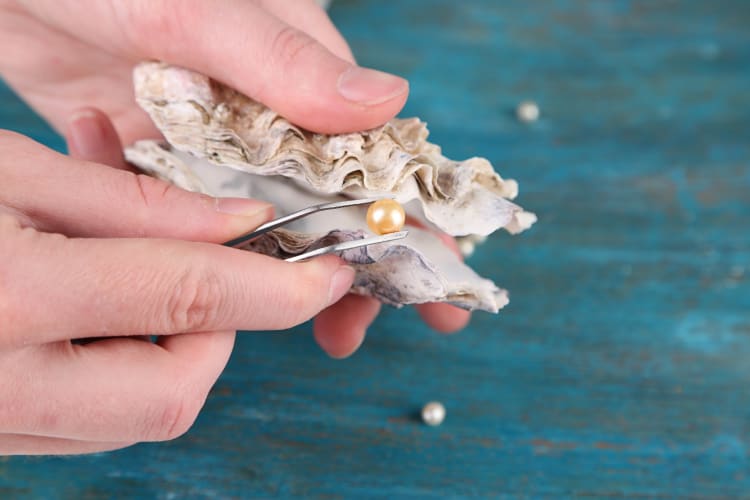
Where Are Geoducks Found?
As mentioned before, they are native to the Pacific Northwest and Western Canadian coast. It is quite difficult to find them naturally as they burrow below the sea floor, so most of the geoducks we eat are from farms. Farming mostly takes place in Southern Puget Sound, however, you can also find them in the wild from Alaska to Baja California. Geoduck is very popular in China, where it is a delicacy and is often cooked in Chinese hot pots. In other countries — Korea, for example — geoducks are eaten raw, in stews, in soups and other dishes.
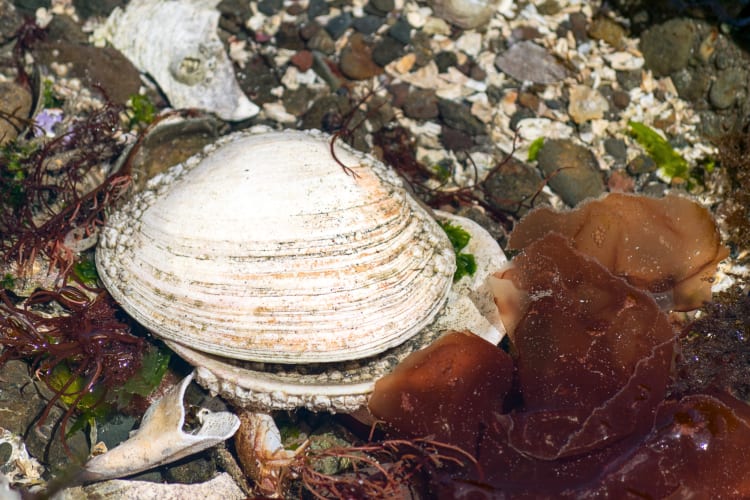
How To Cook Geoduck
Now we know what it is, it's time to understand how to cook a geoduck. The ideal cooking technique is simply boiling it for twenty seconds and then cooling it down in iced water. You can also sautée geoduck or eat it raw in a sashimi recipe, however, it's important not to overcook it as it can become quite tough. The siphon is best served raw or in quick-cook recipes like stir-fries as it can toughen easily. The meat of the body has a much softer texture and is best when grilled, pan-seared or in soups.
A combination of wine and browned butter can be used to cook geoduck, or you can swap the French style for a stir-fry with Asian flavors, featuring chili peppers combined with garlic and fish sauce. In Japan, it is used in sashimi and sushi dishes. However you choose to cook geoduck, it's important to learn how to prepare it.
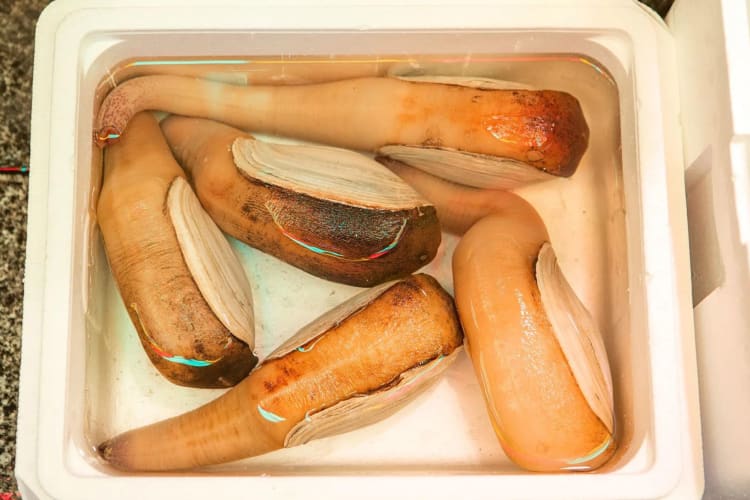
How To Prepare Geoduck
Firstly, you might feel more confident in your preparations if you take one of the many cooking classes near you. These classes are a great way to learn basic culinary techniques to prepare food expertly. Top-rated chefs with years of experience will provide you with key insights, covering techniques, the best seafood tools and more to help you to start cooking with confidence. If you aren't able to attend an in-person class, you can also gain the same insights from online cooking classes.
The first thing you need to do with your geoduck is clean it. Do this by giving it a quick blanch, which involves briefly boiling it before plunging it into ice water. The next step is to remove the outer membrane. If you are cooking geoduck for sashimi or in a hot pot, rinse it briefly in salted ice water once blanched. To prepare and cook geoduck, you will usually want to remove the outer skin by dipping it in hot water for a few seconds. Note that if you decide to do a full blanch, make sure to put it in boiling water for only a few seconds after blanching to help peel the skin off. You might not need to do this if the skin is already loose after blanching.
To remove the skin, insert a small sharp knife between the shell and body at the base of the siphon. Separate the shell from the body by cutting alongside the edge of the shell. Cut off the dark, egg-sized gut ball, and then you will be ready to peel the skin. Next, you should rinse it and scrub off the brown pigment and loose skin. If you want to cut the siphon into small pieces, cut it from the body and then split it lengthwise, discarding any of the spongy bits of meat.

Geoduck Recipes
Geoduck is a versatile ingredient, making it perfect for a variety of dishes, from a Chinese hot pot to a hearty broth. You could simply eat geoduck on its own, but it is much more delicious in dishes, mixed with sauces and other ingredients.

Geoduck Sashimi
Geoduck is very popular in the sashimi world, and one such recipe that showcases that is sautéed geoduck and sashimi. An uncooked geoduck trunk is important in this recipe. To make this, you will need a geoduck, soy sauce, three tablespoons of butter and two tablespoons of sake or vermouth.
Start by blanching (put the clam in boiling water for 20 seconds only) and peeling off the skin as explained above. Open the shell with a small knife and cut the meat from the shell edges. Remember to discard the sack. Slice the trunk or neck thinly and simply dip it in the sauce.
To sauté the body meat, slice it thinly and put the butter in a pan over medium heat. Add the geoduck body slices together with vermouth or sake once the butter is brown. You should only sauté for 10 seconds. Season with salt and then serve at your pleasure.
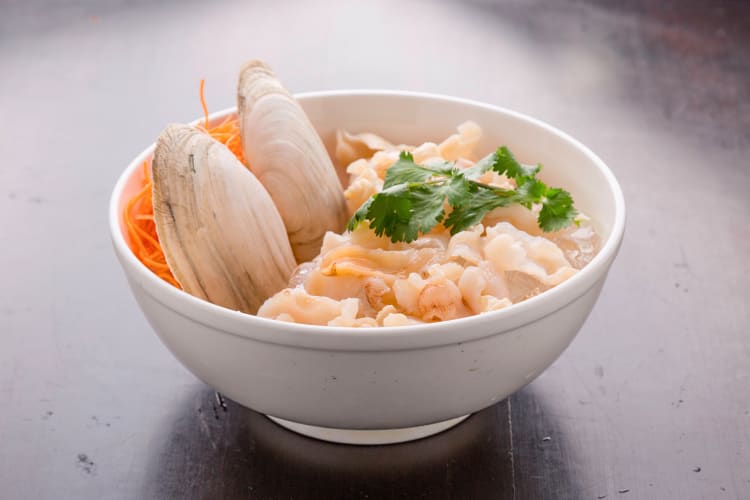
Geoduck in Broth
For this recipe, you'll only need the siphon of the geoduck. You'll also need one fresh bamboo shoot and a diced bitter squash. Wash and then remove the skin as directed above. Slice the geoduck into small slices and put them in soup bowls. Blanch the bamboo shoots and boil a chicken-flavored stock cube. Add the squash for one minute. Pour the broth into the soup bowls and serve with various seasonings and garnishes of your choice.
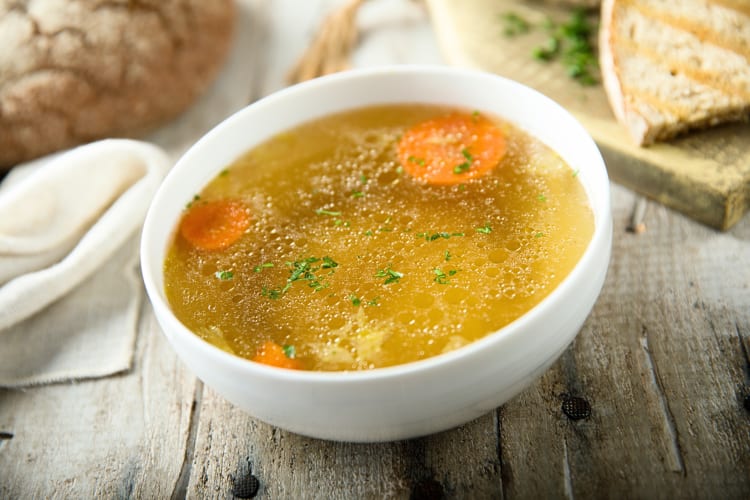
Geoduck Ceviche in Lychee-Lime Dressing
For this dish, you’ll need two purple yams, three cucumbers, a geoduck, jicama, 15 canned lychees, lime juice, corn kernels, cilantro and serrano peppers. Blanch and thinly slice the geoduck siphon. For the dressing, blend the lime juice, cilantro, serrano peppers and lychees (along with the syrup from the cans) until liquified. Then, refrigerate the mixture in a glass jar.
Put the purple yams in foil and bake at 374°F for 45 to 50 minutes. Once cooked, place them in the fridge to chill before peeling and cutting them into small 0.5cm cubes. Next, put the sliced cucumbers and cubed jicama with salt in a mixing bowl for five minutes. Add the corn and yam with olive oil. Add the dressing with the sliced geoduck in a glass bowl and mix thoroughly. Allow them to stand for five minutes and then add the dressing, geoduck and ceviche to each salad and serve.
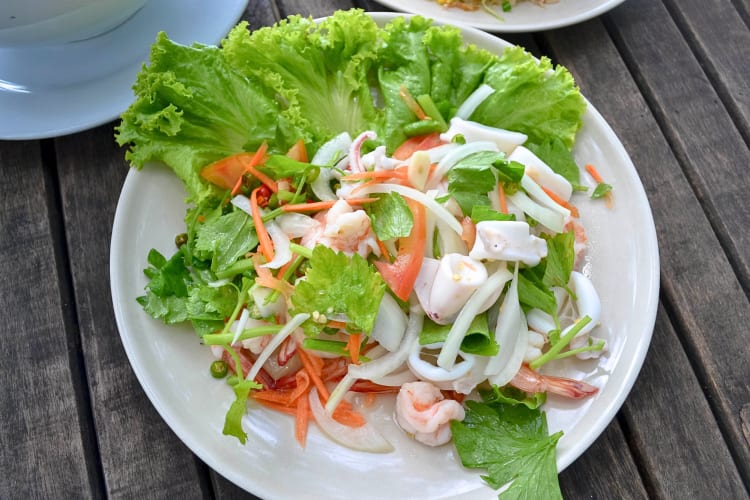
Where To Buy Geoduck
Geoduck is fairly costly as it is rare and therefore a sought-after delicacy. If you're lucky, you'll find it sold in high-end grocery stores or certain fish markets. Upscale restaurants might also have it available in some dishes. Otherwise, the best option is to search online and find out which farms will sell and deliver geoduck directly to you. It is often more expensive than other clams, however, it is worth trying at least once.
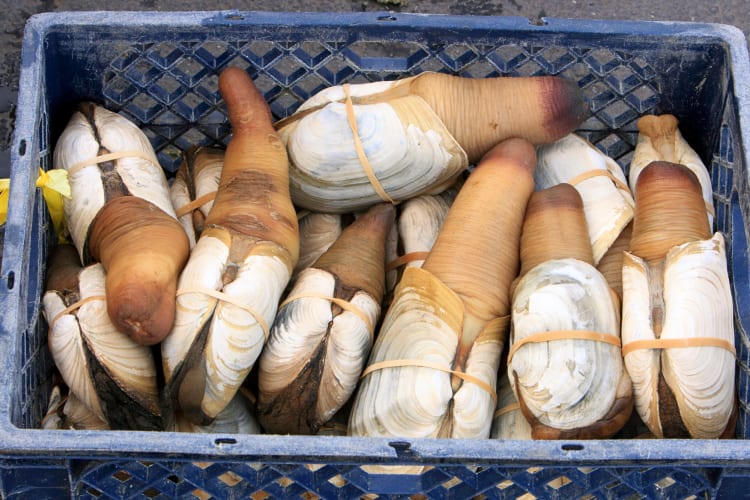
Geoduck Price Points
Demand and rarity will shape the price of geoduck. The demand overruns the supply, which explains the high price tag. If you are outside of where it is harvested in North America or Asia, there will be an added price due to shipping. In the U.S., it is mostly sold for 20 to 30 dollars per pound. In some high-end restaurants in countries like China, people pay $300 for a geoduck dish. But, it is a lot cheaper in North America when purchased from a place that's not a restaurant.
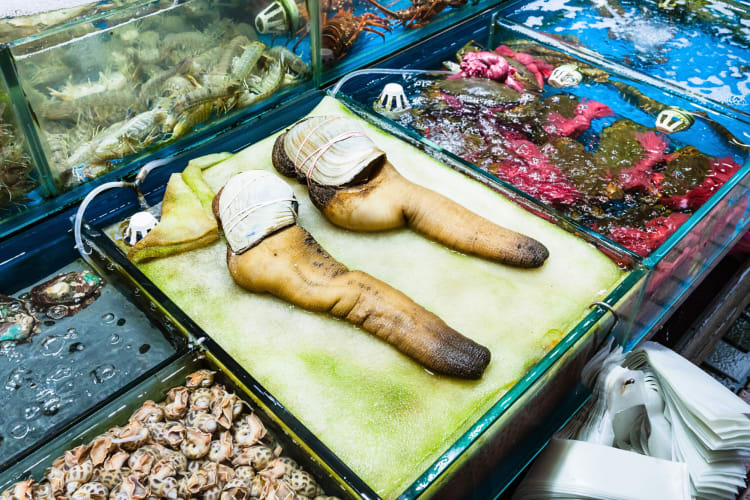
Throughout this article, we have explored key information about the geoduck clam. From understanding what it is and where it is found, to how to prepare and enjoy it with meals prepared in your own kitchen, we hope you've learned more about this interesting creature and delicious delicacy. Whilst rare and, depending on where you live, quite expensive, it's well worth trying for any discerning gourmand who enjoys sampling the many fruits of our oceans.
For even more ways to explore your favorite foods, check out other experiences happening on Cozymeal.



FOOD FOR THOUGHT?
Join the conversation.